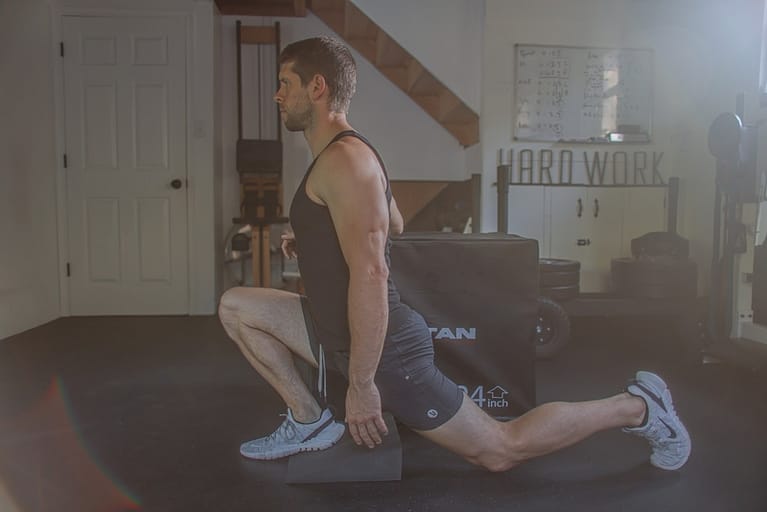Why You Should Lift Weights: Lift More, Live More
Importance of Lifting
“Everybody wants to be a bodybuilder, but don’t nobody wants to lift no heavy ass weights”- Ronnie Coleman.
You don’t have to be a bodybuilder, but you should lift some heavy ass weights. Exercising can feel daunting but what people don’t realize is that 30-60 minutes of appropriate resistance training per week can be all you need to increase muscle mass, slow the aging process and shield yourself from injury and sickness especially later on in life. Don’t you want to enjoy the foods you eat and overall feel healthier and move better?
If you enjoy strength training then it probably comes naturally. If you don’t, then try to look at it as an investment. If you spend time working with weights in your earlier years, you will reap the benefits later in life. And even if you are already into your later years, resistance training can still benefit you greatly at any age.
Decrease Risk for Injury
Resistance training and increased muscle mass can also help protect you from injury.
Research has shown that the risk of bone fractures increases progressively every year. This is because of how our bones naturally break down (by 1%) each year after the age of 25.
Resistance training helps fight this bone degradation and in many cases can increase bone mineral density. This means that if you are to take a fall, you are much more likely to absorb it better or recover quicker. There’s a lot more information on this subject, but we’ll save that for another time.
You can get more information about specific injury prevention here:
Live Forever!
Many are looking for the fountain of youth. The answer lies in fighting sarcopenia which affects our muscles as we age.
Resistance training can slow the aging process in a number of ways. By preserving muscle mass, regular resistance training can help keep you young. It can help fight sarcopenia which is characterized as a progressive loss of muscle or change in muscle mass as we age. What is Sarcopenia? Sarcopenia is characterized as a progressive loss of muscle or adverse muscle changes that accrue over a lifetime. Sarcopenia is hard to assess, but it is a problem that affects mostly the elderly, and its effects can range from 5 – 50% depending on certain factors like age, gender and genetics to name a few.
Research is still ongoing but sarcopenia was once thought to only affect older people, new research is finding that sarcopenia begins at an earlier age. As of yet there is no understood mechanism for the cause of sarcopenia, but it is clear that resistance training can prevent and in some cases even reverse the effects in as little as 6 months.
Resistance training is not only beneficial to muscle tissue but may have a neuroprotective effect on the brain as well!
A recent study assessed the brain metabolism in older adults after 12 weeks of resistance training and concluded that 2x per week resistance training was protective against neurodegeneration. 41 adults (age 60-80) were divided into two groups. One group performed resistance training sessions twice per week (upper body and lower body) while another group served as the control group over the course of 12 weeks. While the control group saw a decline in NAA/CR (N-Acetyl Aspartate/Creatine), the group that resistance trained saw a significantly less decline. Shocking but the adults who trained also saw increases in overall strength and muscle size as well.
Importance of Lifting
At this point, it is a foregone conclusion that safe, intelligent and appropriately progressive resistance training is a tonic for the entire body. The benefits are endless but I want to mention a few more here.
Resistance training can protect your genes (telomere length) from degradation.
A study was done in powerlifters and sedentary people that found that the telomere length of the powerlifters was longer than that of sedentary people by a considerable amount. Not sure what telomeres are? I had to review this as well. Think back to your high school days. Telomeres are the caps at the ends of chromosomes. Longer telomeres means better overall health.
Resistance training will also improve glucose tolerance. What does this mean? It means that when you contract your muscles during resistance exercise, your body uses stored glycogen (sugar) for energy. Your muscles will try to replace that sugar in preparation for the next training bout (supercompensation). This means that people who regularly resistance train will be able to get away with eating more carbs (to a certain extent) with less spillover (fat gain).
This makes resistance training superior to cardio training for FAT LOSS. In fact, a study found that resistance training alone actually improved cardiac performance on a treadmill. Meaning, you can improve your aerobic capacity by simply resistance training. Safe resistance training can even help reverse Type 2 diabetes.
Easy Program
If you’ve skipped through this article to get to the training, that’s ok! The benefits to resistance training are numerous and would take me a much longer time to write about.
This program can be broken down and spread across 3 days or even condensed into one, however research has shown that spreading your training volume across 2 days outperforms condensing it into one in terms of muscle growth.
Perform the exercises one set at a time or in circuit fashion. Each workout should take around 30 minutes to complete.
Studies suggest that two 30 minute training sessions per week is sufficient to increase protein synthesis and elicit a hypertrophic muscle response as well as protect the brain and improve overall health (Schoenfeld).
| Day 1 | Day 2 |
| Lower Body | Upper Body |
| Romanian DL 2x 8 | Lying DB Press 2×10 |
| Goblet Squat 2x 8 | Bent DB Row 2×10 |
| Plank 2x :30 | DB Hammer Curl 2×10 |
| Side Plank 2x :15 | Lying DB Chest Fly 2×10 |
| Split Squat 2×15 | DB Tricep Kickback 2×10 |
Conclusion
How long will it take to see results? In many studies changes to muscle mass required around 12 weeks of consistent training. But this isn’t going to be something you do then stop. Remember that this is an investment. The more time you are able to spend with safe, recoverable and challenging resistance training. Focus on the muscle you are working and slowly increase the resistance of the exercise over time.
References:
- Cruz-Jentoft. A.J. et al. Sarcopenia: Revised European Consensus on Definition and Diagnosis. Age and Ageing 48, 16-31. January 2019.
- Kadi F, Ponsot E, Piehl-Aulin K, Mackey A, Kjaer M, Oskarsson E, Holm L. The effects of regular strength training on telomere length in human skeletal muscle. Med Sci Sports Exerc. 2008 Jan;40(1):82-7. doi: 10.1249/mss.0b013e3181596695. PMID: 18091019.
- Kopiczko, A., Adamczyk, J.G., Gryko, K. et al. Bone mineral density in elite masters athletes: the effect of body composition and long-term exercise. Eur Rev Aging Phys Act18, 7 (2021). https://doi.org/10.1186/s11556-021-00262-0
- Schaap LA, Koster A, Visser M. Adiposity, muscle mass, and muscle strength in relation to functional decline in older persons. Epidemiol Rev 2013; 35: 51–65.
- Schoenfeld BJ, Ogborn D, Krieger JW. Effects of Resistance Training Frequency on Measures of Muscle Hypertrophy: A Systematic Review and Meta-Analysis. Sports Med. 2016 Nov;46(11):1689-1697. doi: 10.1007/s40279-016-0543-8. PMID: 27102172.
- Sheoran S, Vints WAJ, Valatkevičienė K, Kušleikienė S, Gleiznienė R, Česnaitienė VJ, Himmelreich U, Levin O, Masiulis N. Strength gains after 12 weeks of resistance training correlate with neurochemical markers of brain health in older adults: a randomized control 1H-MRS study. Geroscience. 2023 Jan 26:1–19. doi: 10.1007/s11357-023-00732-6. Epub ahead of print. PMID: 36701005; PMCID: PMC9877502.
- Strasser B, Pesta D. Resistance training for diabetes prevention and therapy: experimental findings and molecular mechanisms. Biomed Res Int. 2013;2013:805217. doi: 10.1155/2013/805217. Epub 2013 Dec 22. PMID: 24455726; PMCID: PMC3881442.






